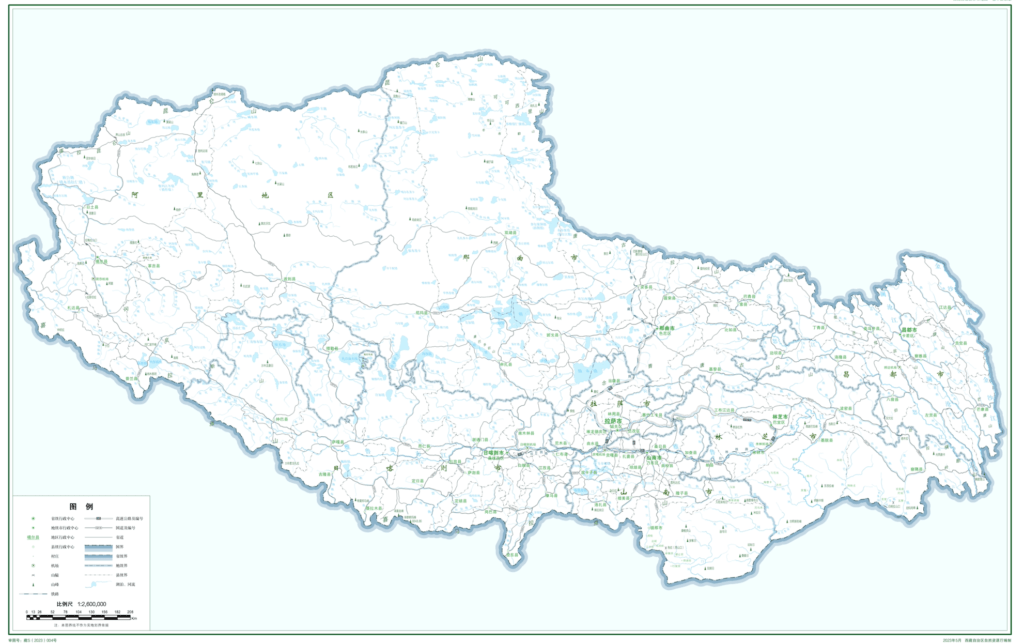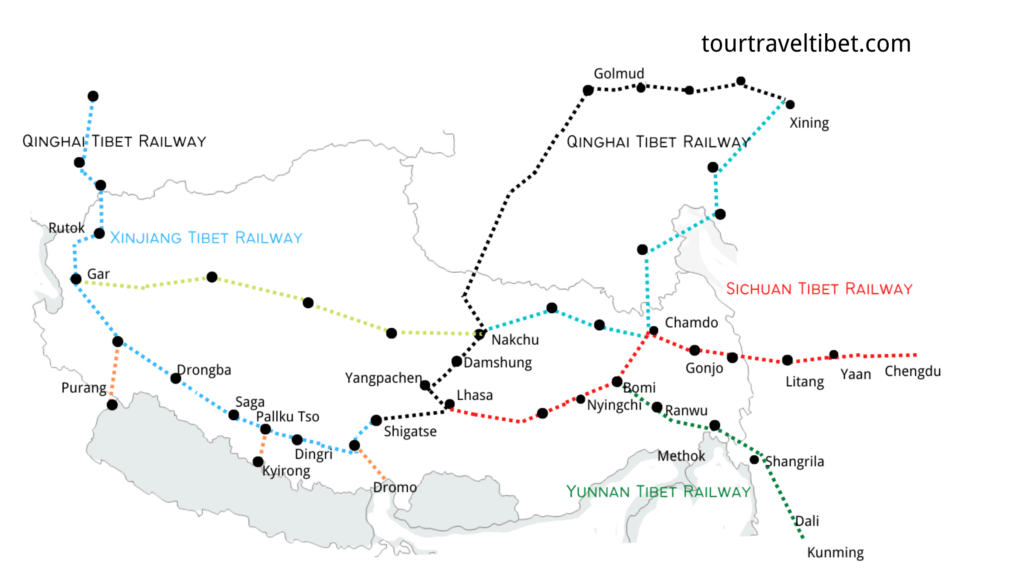Nestled in the southwestern expanse of the Qinghai-Tibet Plateau lies the awe-inspiring Tibet Autonomous Region, often referred to as the “Roof of the World” and “The Third Pole of the Earth.” This remote region, with a population of 3.66 million as of 2021, is renowned for its superlative attributes. Home to Mount Everest, the world’s highest peak, Tibet boasts an average elevation that outstrips any other, making it the highest place on Earth.
Tibet’s cultural heritage is as captivating as its natural landscapes. As the main home of Tibetans in China and the birthplace of Tibetan culture, the region boasts a rich and magnificent heritage. UNESCO-designated sites like the iconic Potala Palace, the revered Jokhang Temple, the vast Qiangtang plain, and the majestic Tanggula Mountain-Nujiang Source region serve as testament to Tibet’s cultural wealth and historical significance.
Tibetan cuisine is a reflection of the region’s unique culinary culture, characterized by staples like butter, tea, Tsampa (roasted barley flour), beef, and mutton—referred to as the “four treasures” of Tibetan cuisine. Additionally, Tibet is renowned for its highland barley wine and a variety of traditional dishes that delight the palate and offer a glimpse into the rich gastronomic heritage of the region.
In every aspect, Tibet enchants with its natural beauty, cultural richness, and culinary delights, inviting travellers on a journey of discovery and wonder amidst the roof of the world.

Lhasa, historically known as “Luoze,” is an iconic historical and cultural hub in China, celebrated as an international tourist hotspot. Thanks to its high altitude and abundant sunshine, it’s fondly nicknamed the “Sunshine City.” Lhasa is renowned for its exquisite landscapes, profound history, distinct traditions, and a strong religious essence. The region boasts grand geological formations, picturesque scenic spots, and historical landmarks, all adorned with vibrant ethnic customs. Notable attractions include the awe-inspiring Potala Palace, Norbulingka, Barkhor Street, and the revered Jokhang Temple, among others.
Shigatse, meaning “wishful manor” in Tibetan, served as the former residence of the Panchen Lama. It’s a pivotal prefecture-level city in Tibet, prominently positioned in China’s “Belt and Road” initiative. Shigatse captivates with its stunning natural beauty and wealth of cultural landscapes, including sacred mountains, holy lakes, sprawling grasslands, and renowned temples. Here, you’ll find the world’s highest peak, Mount Everest, the “Polar Tianhe” Brahmaputra River, and iconic sites like Tashilhunpo Temple and Baiju Temple.

Shannan, often hailed as the “cradle of Tibetan national culture,” stands as one of the earliest birthplaces of Tibetan civilization. It holds numerous “firsts” in history, from the first farmland to the first palace, Buddhist temple, and scriptures. This region is endowed with a pristine environment, abundant resources, and a wealth of scenic spots and historic sites. Among its treasures are the sacred Yamdrok Yumco, one of the three holy lakes on the snowy plateau, the meandering Yalong River, the ancient Yumbulakang, Changzhu Temple, Samye Temple, and much more.

Nyingchi, often called the “Tibet Jiangnan,” is one of the birthplaces of primitive human culture on the Qinghai-Tibet Plateau and a crucial passage for travellers from Sichuan and Yunnan en route to Tibet. This region is blessed with breathtaking scenery and abundant resources, earning it titles such as the “Biological Gene Bank” and “Kingdom of Animals and Plants.” Nyingchi showcases remarkable sites like the Yarlung Zangbo Grand Canyon, the world’s largest, Basongcuo Forest Park, Taohua Valley, Xiuba Millennium Ancient Castle Group, and many more.

Qamdo, named “the place where water meets” in Tibetan, stands at the crossroads of Tibet, Sichuan, Qinghai, and Yunnan. It’s the heart of the “Ancient Tea Horse Road” and is known as the “Pearl of Eastern Tibet.” This birthplace of Kham culture reveals a world of enchanting beauty, encompassing Ranwu Lake, Leiwuqi Red Deer Nature Reserve, Karuo primitive village ruins, and the spiritually significant Qiangbalin Temple.

Nagqu, named for the Nagg River that flows through its basin, serves as the vital link connecting northern Tibet to the wider world. This region in the heart of the Qinghai-Tibet Plateau is the source of major rivers like the Yangtze and Nujiang, earning it the moniker of the “Source of Rivers” and “Chinese Water Tower.” Nagqu boasts the Tanggula Mountain-Nujiang Source Scenic Area, the pristine Namtso, the Eight Pagodas on the Grassland, and more.

Ngari, situated on the southwest border of China, stands as the “Roof of the World” in the core of the Qiangtang Plateau. This land is where the Himalayas, Gangdise Mountains, and other ranges converge, earning it the title of the “ancestor of all mountains.” Ngari is the origin of the Brahmaputra River, the Indus River, and the Ganges River, making it the “source of hundreds of rivers.” Among its treasures are the Pangong Tso Forest Park, Manasarovar Tso, Changtang Nature Reserve, and the ancient ruins of the Guge Kingdom.




With over 1,500 lakes, Tibet holds the distinction of having the most lakes in China, covering 30% of the country’s total lake area. Nestled amidst the rugged mountainous terrain, these lakes range from freshwater to saltwater bodies, surrounded by lush pastures and inhabited by rare wildlife. Among the revered lakes are Namtso, Yamdrok Lake, Manasarovar Lake, Pangong Lake, Basong Co, and Senli Co, with Namtso, Manasarovar, and Yamdrok renowned as the three “holy lakes” holding profound religious significance.
Tibet’s allure lies in its awe-inspiring topography, characterized by mighty rivers such as the Yangtze, Nu, Lancang, and Brahmaputra. The region boasts diverse landscapes, from towering mountains to deep gorges, vast glaciers, unique rock formations, and expansive deserts. Geographically, Tibet encompasses the Himalayas, Tibetan valleys, the vast Tibetan plateau, and mountainous canyons in the east.